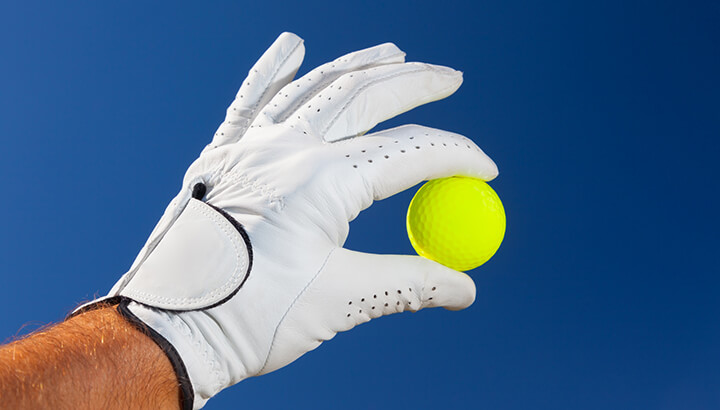Strictly speaking, you can move your ball at any time — but that movement likely incurs a penalty. Don’t like your lie, no swing, embedded in a shrub? Just take an unplayable and drop your ball, within the stipulated club length and no closer to the hole. However, it would be folly to resort to numerous penalty drops throughout a round.
Let’s take a look at common situations where players want to move their ball without penalty.
1. Tee box
It’s a windy day. Just as you go into your backswing, the ball topples off the tee. Are you allowed to replace it without penalty? Certainly, assuming you have not made a swing at the ball, as “the ball was not in play and there was no stroke made at it” (Rules Decision 18-2a/19). You did not cause the ball to move, so you can replace your ball and drive away without penalty — similar to accidently moving your ball with a practice swing.
2. “Through the green” (between the tee and the green)
There are many instances through the green where the ball can be moved. Always check the local rules for the day for the course you are playing. Often there is preferred lie (clean and place) allowed on the fairway or through the green, enabling you to mark, move and place your ball. This is not mandatory, and can be due to wet weather, mud, poor turf or other reasons peculiar to that course (winter golf in St Andrews demands that you mark, lift and place your ball on an astroturf mat through the green, to avoid course damage).
If your shot comes to rest directly in front of a divot, blocking your shot, can you move your ball? No, you can’t, and worse — you can’t tap down the divot either. The rub of the course means that you cannot improve your lie or swing in any way. You need to play as it lies, unless local rules state otherwise.
When maintenance work is underway, some courses will identify parts of the course that are ground-under-repair (GUR). This might arise from vehicle tracks, drainage channels or other temporary damage. The GUR would be either optional or compulsory. Optional GUR, often marked by a blue line, allows you the choice of moving your ball to the nearest point of relief and dropping it no nearer the hole. Compulsory GUR, generally indicated with a white line, designates that you must mark, move and drop your ball at the nearest point of relief outside the GUR.
If a bird, fox, alligator or other “outside agency” is seen to move or take your ball, then you can recover and return to where you thought it was (Rule 18-1) or use a replacement ball if the original is unrecoverable. Before playing your next shot, it is wise to obtain your marker’s consent to the spot where you considered it was.
More rules
If another ball hits and moves yours, Rule 25-3b applies — simply replace at the agreed former location. If your ball settles on the green of another hole, you can move your ball (cleaned if need be) to the nearest relief point no nearer the hole, drop and play.
When your ball is deemed to interfere with another player’s line or swing, you can mark behind, remove and replace after their shot.
A ball can be lifted to the extent necessary to identify it. In a sense, you are not moving it anywhere and only make contact with the ball to enable identification. It’s best to do this with another player nearby, so there is no inference that you’re improving your lie.
When there is an immovable obstruction that hinders your stance or swing, or a manmade obstruction between your ball and the hole impeding the possible ball flight, the ball can be moved without penalty. For example, your ball may have come to rest on a grate or a sprinkler head, necessitating a drop. If your ball lies near a hazard stake that impacts your stance or swing, and the stake can’t be temporarily removed, then it’s deemed an immovable object and you gain relief — no closer to the hole.
Finishing on a pathway won’t always allow you to move and drop — check the local rules. The famous Granny Clarke’s Wynd that cuts across The Old Course in St Andrews is “part of the course” and relief cannot be taken if your ball settles there.
Casual water on the course enables you to move the ball without penalty. Generally, if your ball finishes there or your stance is affected (visible underfoot), then move your ball to the nearest point of relief, no closer to the hole.
3. The green
You can mark and pick up your ball as often as you wish on the green — as long as you don’t unduly hold up play. It is unlikely there’d be reason to move it, other than to clear the line for another player’s putt (generally moving a putter head length to the side) and then replacing after their putt is taken.
Being confident about when, why and how to move your ball is comforting in all competitive rounds. Match play rules, in particular, demand a command of the rules. You must understand what is the nearest point of relief, an immovable object or what constitutes a penalty. Understanding when you can move your ball without penalty could save you several shots and penalties.
— N. Incoll
